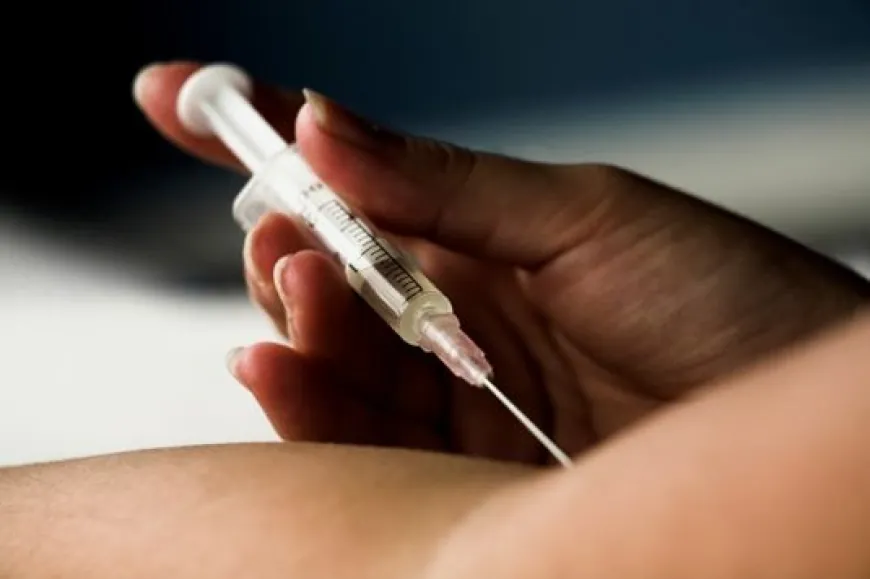Injectable Drugs: The Brazilian Market for Injectable Medications Continues to Grow Rapidly
Brazil has a large and diverse serum Drugs market that serves both hospitals and ambulatory care settings.

Brazil has a large and diverse serum Drugs market that serves both hospitals and ambulatory care settings. The country has seen significant growth in this segment in recent years. Let's take a closer look at some of the key aspects of Brazil's serum Drugs landscape.
Market Size and Injectable Drugs
The size of Brazil's serum Drugs market is substantial. According to estimates from a leading industry report, the market was valued at over $4 billion USD in 2020 alone. Growth has also been strong, with the market expanding at a compound annual growth rate of around 7-8% in the last 5 years.
This growth is being driven by Brazil's large population as well as increases in healthcare spending. As the country's economy has strengthened in recent years, more resources have been devoted to the healthcare system. This has supported greater utilization of prescription drugs including injectable medications.
The hospital sector accounts for a major portion of injectable drug spending currently. However, the ambulatory care segment is showing faster growth and gaining share as more treatments shift to outpatient settings. Convenience and cost-effectiveness are big factors propelling this transition.
Leading Injectable Drugs
Certain therapeutic classes dominate Brazil's serum Drugs market. Oncology accounts for a large share due to the availability of many high-cost injectable cancer drugs. Other major categories include anti-infectives, cardiovascular drugs, anesthetics, and immunomodulating agents.
Within oncology, the biggest-selling classes are monoclonal antibodies, cytotoxic and targeted therapies. Leading anti-infective injectables encompass antibiotics as well as antivirals and antifungals. Popular cardiovascular injectables treat issues like acute coronary syndrome, heart failure and dyslipidemia.
Biosimilars have also entered the market across several therapeutic segments, creating more treatment options and driving down costs. Their uptake is gradually increasing as more products receive regulatory approvals and physicians gain familiarity.
Distribution and Reimbursement
Physicians are the primary prescribers of serum Injectable Drugs in Brazil, although nurses and other qualified professionals can also administer medications in appropriate settings. Drugs are distributed through retail pharmacies as well as hospital pharmacies.
A universal public healthcare system covers most citizens. The government is the biggest payer for prescription drugs through SUS (Sistema Único de Saúde), which negotiates prices directly with manufacturers. Private health plans also cover a portion of the population and contract separately.
Reimbursement policies aim to encourage the use of generics and biosimilars over branded products when available. However, many high-cost specialty injectables still face restricted or delayed coverage even with regulatory approval in Brazil. This creates access challenges.
Regulatory Environment
Brazil's health regulatory agency ANVISA (Agência Nacional de Vigilância Sanitária) oversees the pharmaceutical industry. It approves new drugs and ensures compliance with good manufacturing, distribution and dispensing practices.
The registration process for serum Drugs is similar to other dosage forms. ANVISA evaluates clinical data dossiers along with information on manufacturing sites and quality. A priority review track exists for agents addressing serious diseases lacking therapy alternatives.
The agency promotes generic and biosimilar competition through an abbreviated approval pathway. But it maintains strict post-marketing surveillance to verify safety, efficacy and quality of all injectable medicines on the market. Regulatory harmonization with other countries also facilitates regional drug development.
Brazil's serum Drugs sector will likely maintain healthy growth prospects going forward. Positive macroeconomic trends and substantial government health spending increases are projected to continue supporting demand.
Advancing diagnostic capabilities and an aging population profile also provide tailwinds. Meanwhile, greater accessibility of specialty care and priority treatments means more patients require complex injectable medications.
Biosimilars and next-generation therapies represent major opportunities as well. Factors like rising out-of-pocket costs may also stimulate switch rates to affordable alternatives. Overall, Brazil demonstrates strong potential as a significant market for injectable pharmaceuticals globally.
For Deeper Insights, Find the Report in the Language that You want
About Author:
Money Singh is a seasoned content writer with over four years of experience in the market research sector. Her expertise spans various industries, including food and beverages, biotechnology, chemical and materials, defense and aerospace, consumer goods, etc.












